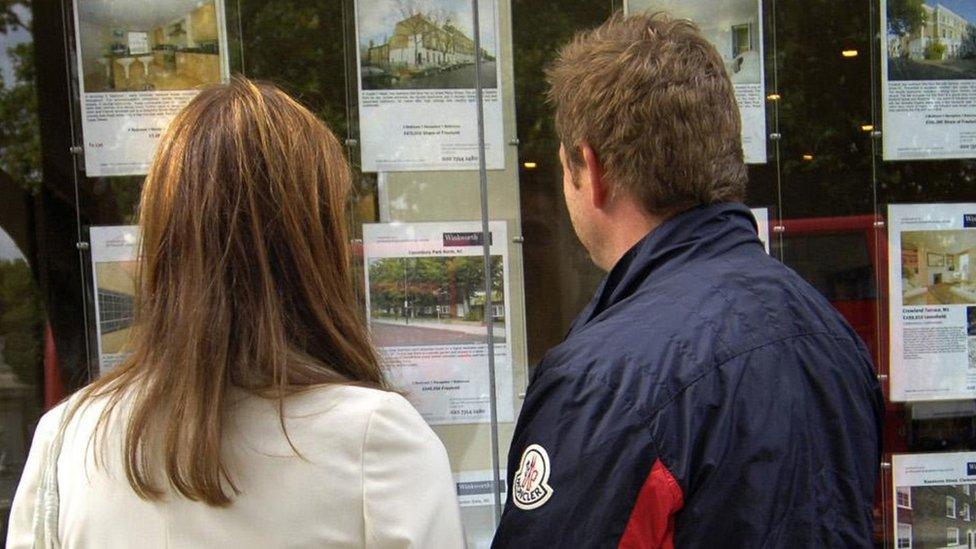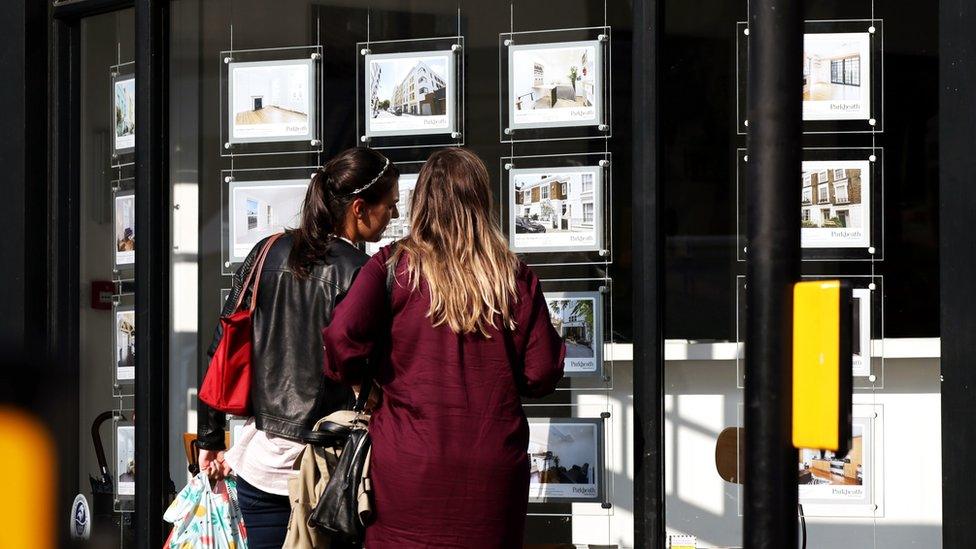House prices at new high as buyers seek more space
- Published

Surging demand for houses will last well into 2022 as buyers continue to look for more room after being cooped up during the pandemic, says property website Zoopla.
A search for space has pushed up the average price of a house by 7.3% over the past year, reaching a new high of £230,700, it says.
While houses are proving popular, flats are less sought after.
But properties of all kinds are in short supply, the firm stressed.
"Demand for houses is twice as high as typically seen at this time of year between 2017 and 2019, accelerating away from demand for flats, creating a disparity in average price growth across the two property types," Zoopla said.
"House prices are being supported in part by a severe shortage of homes for sale, with stock levels down some 25% in the first half of the year compared to 2020."
The firm said that while house prices were surging, the growth in flat prices was lagging at 1.4% over the past year.
"The rise in demand for houses is something we saw in the first lockdown," Grainne Gilmore, head of research at Zoopla, told the BBC.
"It's a reassessment among many homeowners of where they want to live."
Ms Gilmore said that with the rise of working from home, many people wanted a spare room that could become an office, while others were seeking garden space.
"A cohort of buyers has eroded the supply of family houses and put upward pressure on house prices more than flats over the past 12 months," she said.
"That's a situation that we would expect to continue into 2022."
"We're still seeing very high levels of demand in the market, even now with more modest stamp duty savings," Ms Gilmore added.
The price of the average UK house has jumped by 30% since 2007, when a typical house cost just £177,300, according to Zoopla.
In June alone, house prices were up 5.4% year-on-year, although buyer demand dipped 9% in early July because of the stamp duty holiday coming to an end.
Sales agreed this year are still 22% ahead of average levels in 2020.
Regional variations
As people are taking the opportunity to move out of big cities, house prices have grown the most in Wales at 10.2% and the North East at 8.8%.
House price growth is weakest in London at 5.6%.
For flats, prices have risen the most in Scotland at 5.2% and the Midlands at 3.7%, but in London, flat prices have fallen by 0.5%.
Zoopla said it was also seeing a jump in demand for properties in outer London, up 86% on 2017-19 levels.
But the housing website said that it expected sales in London to improve, "providing there are no further pandemic setbacks", since the rental market had already bounced back.
"Further relaxation on the restrictions around global travel will result in a firmer pick-up in demand, which will also reverse the downward trend in pricing," Zoopla said.

How will higher house prices amid an increase in demand for houses affect you? Get in touch.
WhatsApp: +44 7756 165803
Tweet: @BBC_HaveYourSay, external
Please read our terms & conditions and privacy policy
Or use this form to get in touch:
If you are reading this page and can't see the form you will need to visit the mobile version of the BBC website to submit your comment or send it via email to HaveYourSay@bbc.co.uk, external. Please include your name, age and location with any comment you send in.
Related topics
- Published29 June 2021

- Published8 June 2021

- Published2 June 2021
